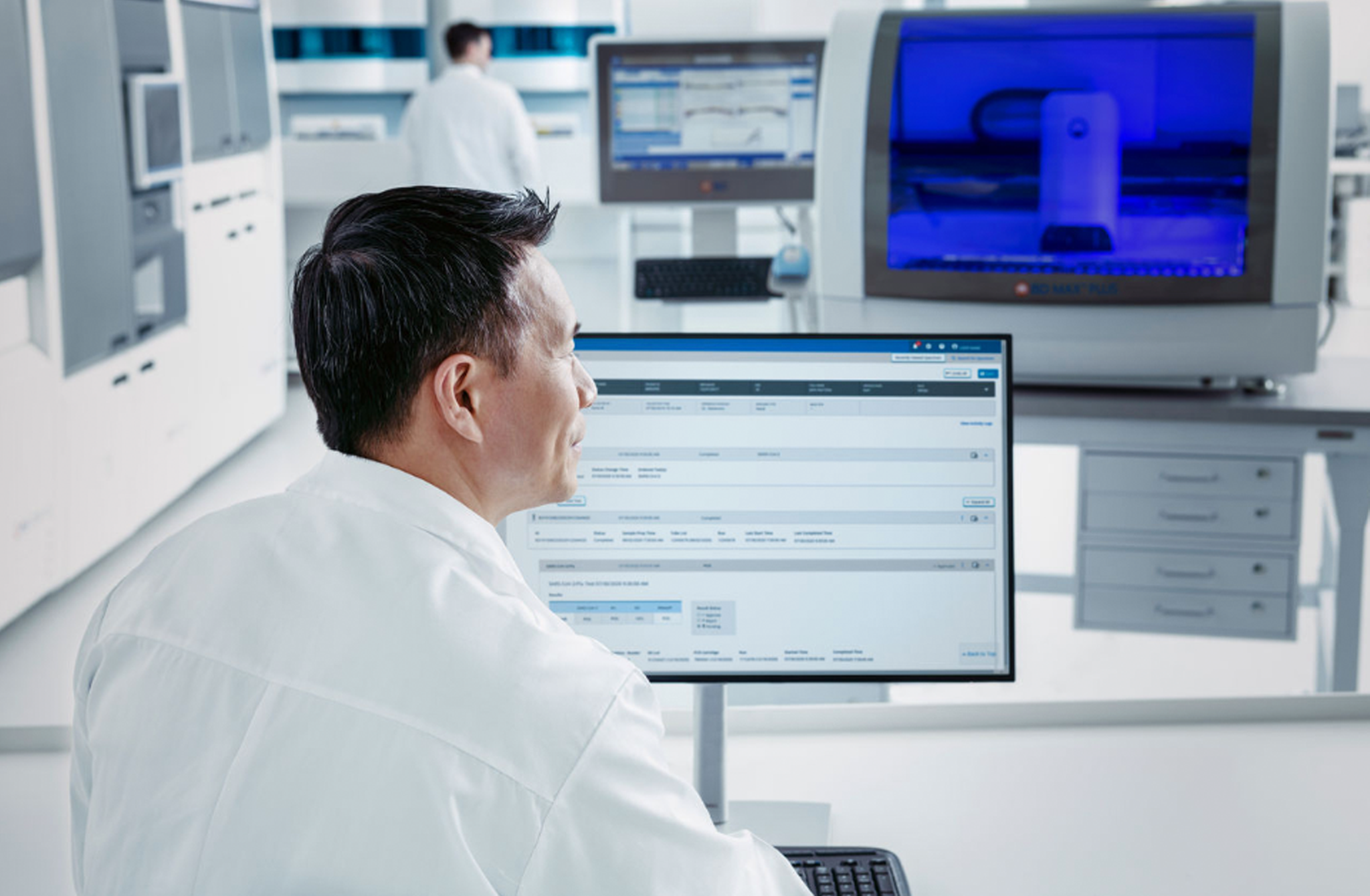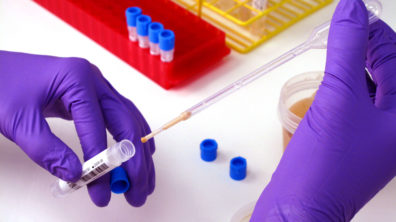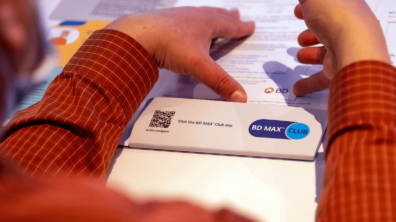
Respiratory tract infection (RTI) - May 30, 2023
Comparing NAATs for the detection of MDR-TB
The WHO reported that tuberculosis (TB) ranked 13th on the list of top causes of death worldwide in 2019 and had caused twice as many deaths as HIV/AIDS in 2021.1
Multi-drug resistant TB (MDR-TB) is defined as TB resistant to both rifampicin (RIF) and isoniazid (INH). MDR-TB persists as a global threat and requires treatment with second-line drugs.1
In 2019, there was a global estimate of 500,000 new cases of RIF-resistant TB or MDR-TB, and 1.1 million with RIF-susceptible and INH-resistant TB, known as Hr-TB.2 People with Hr-TB require a modified treatment regimen.2
While the global success rate of MDR-TB treatment is only 60%,1 efficient and accurate molecular diagnostics is a vital tool in the diagnosis, predicted disease course, and guidance for treatment of MDR-TB.
Read on to learn more about a recent study comparing recent nucleic acid amplification tests (NAATs) for MDR-TB.
Challenges in tuberculosis management
One of the major weaknesses of tuberculosis management remains the lack of diagnostic and drug resistance detection tools appropriate for different laboratory settings.3
WHO endorsements of molecular tests have had substantial strides in more comprehensive MDR-TB testing.3 However, most of these tests are still limited, providing only a RIF resistance profile.3
Unrecognised Hr-TB is associated with higher treatment failure and relapse rates.4 Without rapid testing for INH resistance, diagnosis and appropriate treatment can be delayed.4
Other new assays are beginning to broaden the spectrum by including INH resistance detection in addition to the second-line injectable drugs and fluoroquinolones. Still, there is room to improve, with the lack of RIF and INH resistance detection on a single cartridge remaining a disadvantage.3
Learn more about molecular testing for MDR-TB: The burden of MDR-TB and how molecular diagnostics can help
Comparing moderate-complexity NAATs for MDR-TB
The WHO has endorsed more attractive options that offer Mycobacterium tuberculosis complex (MTBC) detection, as well as RIF and INH resistance detection on respiratory samples, including:3
- Abbott RealTime MTB assay and RealTime MTB RIF/INH Resistance assay on the Abbott m2000sp and m2000rt
- BD MAX™ MDR-TB assay on the BD MAX™ System
- Hain Lifescience/Bruker FluoroType MTBDR assay on the GenoXtract® and the FluoroCycler® XT
- Roche cobas® MTB assay and MTB RIF/INH assay on the cobas® 5800/6800/8800 Systems
David et al. sought to compare the feasibility, ease-of-use and operational characteristics of these four moderate-complexity NAATs and their platforms to that of the Cepheid Xpert MTB/RIF assay.3
During a clinical trial at the Department of Molecular Medicine and Hematology at the University of the Witwatersrand in Johannesburg, South Africa, the authors conducted questionnaires among laboratory operators to understand their experience in using each test/platform,
received manufacturer input on operational requirements and performed time-in-motion analyses on each platform to compare processing times.3
Compared with the Cepheid Xpert MTB/RIF assay, the following tests demonstrated increased analytical sensitivity:3
- Abbott RealTime MTB assay
- BD MAX™ MDR-TB assay
- Roche cobas® MTB assay
The BD MAX™ MDR-TB assay and platform ranked the highest in every category according to the results:3
| BD MAX™ MDR-TB | Roche cobas® MTB and MTB-RIF/INH on the 6800 | Hain Lifescience/Bruker FluoroType MTBDR | Abbott RealTime MTB and RealTime MTB RIF/INH | |
| Ease-of-Use | 86% | 68% | 67% | 64% |
| Operational requirements | 90% | 86% | 80% | 76% |
| Processing time | 4.6 hours for 22 specimens | ~7.8 hours for 94 specimens, with additional time needed for resistance | ~6.3 hours for 94 specimens | 10.3 hours for 94 specimens, with an additional 2.5 hours for resistance |
Learn more about the WHO endorsement of the BD MAX™ MDR-TB assay: WHO includes BD MAX™ Molecular MDR-TB Test in TB Guidelines
Why did the BD MAX™ MDR-TB assay rank first in all categories?
David et al. reported that the BD MAX™ System required only 1 day of operational training, whereas other platforms required 3-5 days.3
As well, no reagent preparation was required, as they were included and ready in the testing strip. Reagents for other assays were either not provided, included in bulk or required mixing.3
The BD MAX™ MDR-TB assay also required the least hands-on time at 26 minutes to process 22 specimens. To process 94 specimens, the other tests required 1.9-3.7 hours.3
The Roche cobas® 6800 platform reportedly had the most complex of all inactivation procedures, requiring sonication and centrifugation steps.3
The BD MAX™ System was unique in giving operators the ability to create a run-list before sample loading, the loading of samples in a random manner and allowing a second run to start nucleic acid extraction while the first run is being amplified.3
David et al. concluded that, “These time-saving measures make the [BD MAX™] platform an attractive option for MDR-TB diagnosis…”3
Though the BD MAX™ System received the highest scores, the survey authors insist that each platform has different strengths and weaknesses, and that individual laboratory needs will therefore play a decisive role in the placement of a centralised molecular platform for MTBC and resistance testing.3
Read the full study from David et al.
References
- World Health Organization. Global tuberculosis report 2022. Geneva, Switzerland: WHO, 2021. Accessed 27 March 2023 at: https://www.who.int/teams/global-tuberculosis-programme/tb-reports/global-tuberculosis-report-2022
- Word Health Organization. WHO Global Tuberculosis Report 2020. Geneva, Switzerland: WHO, 2021. Accessed 17 April 2023 at: https://www.who.int/publications/i/item/9789240013131
- David A, de Vos M, Scott L, et al. Feasibility, Ease-of-Use, and Operational Characteristics of World Health Organization-Recommended Moderate-Complexity Automated Nucleic Acid Amplification Tests for the Detection of Tuberculosis and Resistance to Rifampicin and Isoniazid. J Mol Diagn. 2023 Jan;25(1):46-56. Doi: 10.1016/j.jmoldx.2022.10.001. Epub 2022 Oct 13.
- Olson G, Nathavitharana RR, Lederer PA. Diagnostic Delays and Treatment Implications for Patients with Isonoziad-Resistant Tuberculosis: A Case Report and Review of the Literature. Open Forum Infect Dis. 2019 Jun; 6(6): ofz222. Doi: 10.1093/ofid/ofz222. Epub 2019 May 14.













